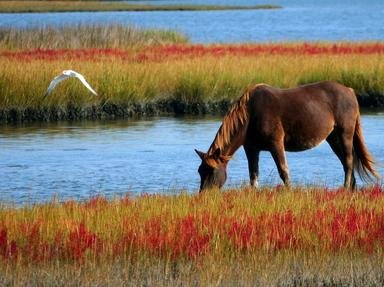Quiz Answer Key and Fun Facts
1. This breed from India is known for its distinct ears that curve together and often touch.
2. This British draft breed only comes in "chesnut" (note the missing 't').
3. This Danish horse is well known for its spots.
4. This desert horse, known for the metallic sheen of its coat, gives the Arabian a challenge for oldest purebred horse breed.
5. This breed has a very unique feature - a curly coat!
6. This American breed, developed by a man named Sam Tuttle, is a smooth ride, and generally a chocolatey brown with a flaxen mane and tail.
7. These tough ponies come from a small island off the coast of Nova Scotia, Canada, which is known as "the Graveyard of the Atlantic"!
8. Probably the least well known of the British native pony breeds, this Scottish pony descends from Celtic and Norse bloodlines, and is quite rare.
9. This Australian breed is used as a stock horse to work the sheep and cattle out in the various parts the outback.
10. This Australian wild horse is similar to the mustangs of North America.
Source: Author
KerBlang
This quiz was reviewed by FunTrivia editor
Tizzabelle before going online.
Any errors found in FunTrivia content are routinely corrected through our feedback system.

